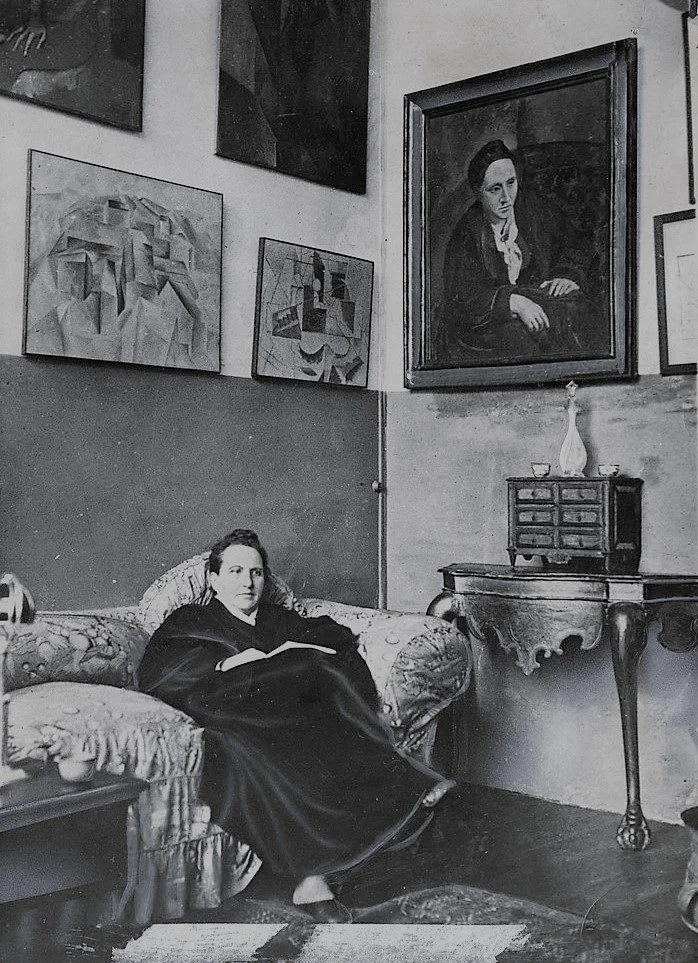The Art of Conversation: From the Private Salon to the Public Art Cafe
François Debon, The Hôtel de Rambouillet, 1863 and the inside of the Peckham Pelican in South London.
Recently, I had the pleasure of visiting a store called Peel in North Carolina in the US. Eclectic and inviting, it offered something for everyone: trinkets, prints, books, clothing. Upon further inspection, however, it became evident that Peel was not only a store, it was a pillar of its community. Fliers were everywhere, listing cultural events taking place in the evenings at Peel - a collage workshop, a parking lot clothing swap, nights hosting lecturers and artists. Clearly, the store supports art and artists, cultural conversations, and community. To me, it was a perfect example of the historical art cafe, or salon. Considered a thing of the past, it led me to wonder how the art cafe has morphed into what it is today. Do we have any true iterations of what the art cafe once was? How do they look compared to the 17th - 20th centuries, and, importantly, do we still need them?
Throughout history, creative thinkers, artists, writers, and philosophers came together to debate and have intellectual, interdisciplinary discussion. The site of these gatherings was the art cafe, or salon. This phenomenon gained popularity in France, with one of the most famous 17th century literary salons being in the Hôtel de Rambouillet run by salonnière Catherine de Vivonne, the marquise de Rambouillet. Experiencing ennui from court life, Madame Rambouillet hosted guests from different walks of life to discuss a variety of topics. Such a unique conversation atmosphere would shape French social dynamics and culture for centuries.
In 20th century Paris, Gertrude Stein’s apartment served a similar purpose as a renowned salon, attracting the likes of Ernest Hemingway and Pablo Picasso. Salons often took place in the private sphere and were most frequently hosted by aristocratic women who could provide a private locale and were surrounded by the cultural elite. During the Harlem Renaissance in New York, Ruth Logan Roberts, Georgia Douglas Johnson and Zora Neale Hurston hosted salons that brought together leading figures in African-American literature and the cultural and political society of Harlem.
Gertrude Stein at 27 rue de Fleurus with her portrait by Picasso on the wall, 1930
Slowly, this artistic and intellectual exchange has transformed from the private sphere to the public sphere. Today, salons are returning, perhaps as a rejection of the increase in digital interaction and overflow of superfluous AI content. Yearning for face-to-face intellectual conversation, these spaces are a gathering point for the universal need for personal interaction and cultural discourse, synonymous with the French Enlightenment. Spaces like Peel in the US, or the Peckham Pelican in South London, a pub that hosts artists talks, gallery exhibitions, and art workshops, or Pints of Knowledge in London, which host pop-up lectures around pubs in London, with guests ranging from award winning sommeliers to physics professors, feed this need for social knowledge and interaction.
These contemporary spaces convey how the salon has evolved from a private aristocratic gathering to a more casual, collective and community based endeavor. These contemporary iterations of the art cafe show how the need for these spaces persists all over the world: the need for people to come together, increase their knowledge, exchange ideas, stoke their passions and inspire one another.
You might also enjoy. . .
Sumina Studer, Violinist and Music Entrepreneur: London’s Hidden Music and Art Spots


